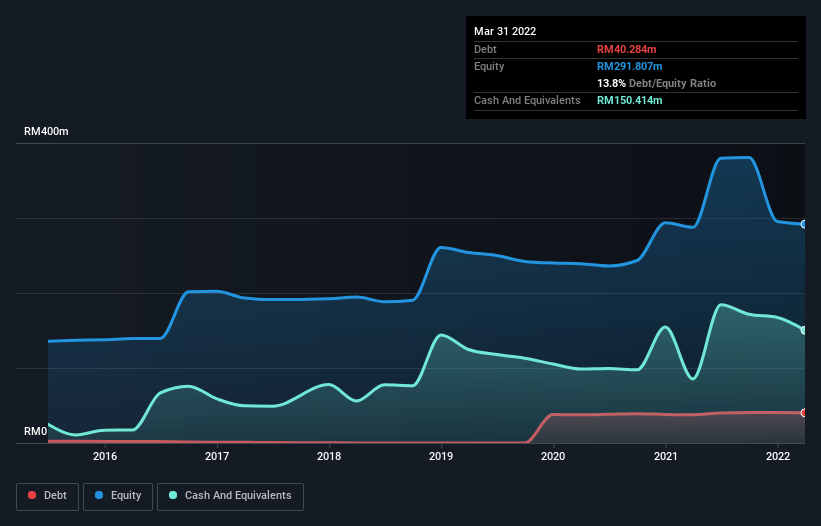Is Sanichi Technology Berhad (KLSE:SANICHI) Using Debt In A Risky Way?

Legendary fund manager Li Lu (who Charlie Munger backed) once said, 'The biggest investment risk is not the volatility of prices, but whether you will suffer a permanent loss of capital.' When we think about how risky a company is, we always like to look at its use of debt, since debt overload can lead to ruin. We note that Sanichi Technology Berhad (KLSE:SANICHI) does have debt on its balance sheet. But the more important question is: how much risk is that debt creating?
Why Does Debt Bring Risk?
Debt is a tool to help businesses grow, but if a business is incapable of paying off its lenders, then it exists at their mercy. If things get really bad, the lenders can take control of the business. However, a more usual (but still expensive) situation is where a company must dilute shareholders at a cheap share price simply to get debt under control. Having said that, the most common situation is where a company manages its debt reasonably well - and to its own advantage. The first step when considering a company's debt levels is to consider its cash and debt together.
View our latest analysis for Sanichi Technology Berhad
How Much Debt Does Sanichi Technology Berhad Carry?
The image below, which you can click on for greater detail, shows that at March 2022 Sanichi Technology Berhad had debt of RM40.3m, up from RM37.7m in one year. However, its balance sheet shows it holds RM150.4m in cash, so it actually has RM110.1m net cash.

A Look At Sanichi Technology Berhad's Liabilities
Zooming in on the latest balance sheet data, we can see that Sanichi Technology Berhad had liabilities of RM59.8m due within 12 months and liabilities of RM33.4m due beyond that. On the other hand, it had cash of RM150.4m and RM39.2m worth of receivables due within a year. So it actually has RM96.4m more liquid assets than total liabilities.
This luscious liquidity implies that Sanichi Technology Berhad's balance sheet is sturdy like a giant sequoia tree. On this view, lenders should feel as safe as the beloved of a black-belt karate master. Simply put, the fact that Sanichi Technology Berhad has more cash than debt is arguably a good indication that it can manage its debt safely. The balance sheet is clearly the area to focus on when you are analysing debt. But you can't view debt in total isolation; since Sanichi Technology Berhad will need earnings to service that debt. So if you're keen to discover more about its earnings, it might be worth checking out this graph of its long term earnings trend.
In the last year Sanichi Technology Berhad's revenue was pretty flat, and it made a negative EBIT. While that hardly impresses, its not too bad either.
So How Risky Is Sanichi Technology Berhad?
While Sanichi Technology Berhad lost money on an earnings before interest and tax (EBIT) level, it actually generated positive free cash flow RM18m. So taking that on face value, and considering the net cash situation, we don't think that the stock is too risky in the near term. There's no doubt the next few years will be crucial to how the business matures. When analysing debt levels, the balance sheet is the obvious place to start. However, not all investment risk resides within the balance sheet - far from it. For instance, we've identified 3 warning signs for Sanichi Technology Berhad (2 are significant) you should be aware of.
At the end of the day, it's often better to focus on companies that are free from net debt. You can access our special list of such companies (all with a track record of profit growth). It's free.
If you're looking to trade Sanichi Technology Berhad, open an account with the lowest-cost platform trusted by professionals, Interactive Brokers.
With clients in over 200 countries and territories, and access to 160 markets, IBKR lets you trade stocks, options, futures, forex, bonds and funds from a single integrated account.
Enjoy no hidden fees, no account minimums, and FX conversion rates as low as 0.03%, far better than what most brokers offer.
Sponsored ContentNew: Manage All Your Stock Portfolios in One Place
We've created the ultimate portfolio companion for stock investors, and it's free.
• Connect an unlimited number of Portfolios and see your total in one currency
• Be alerted to new Warning Signs or Risks via email or mobile
• Track the Fair Value of your stocks
Have feedback on this article? Concerned about the content? Get in touch with us directly. Alternatively, email editorial-team (at) simplywallst.com.
This article by Simply Wall St is general in nature. We provide commentary based on historical data and analyst forecasts only using an unbiased methodology and our articles are not intended to be financial advice. It does not constitute a recommendation to buy or sell any stock, and does not take account of your objectives, or your financial situation. We aim to bring you long-term focused analysis driven by fundamental data. Note that our analysis may not factor in the latest price-sensitive company announcements or qualitative material. Simply Wall St has no position in any stocks mentioned.
About KLSE:SANICHI
Sanichi Technology Berhad
An investment holding company, engages in the design, development, and fabrication of precision molds and tooling for the automotive sector in Malaysia, Germany, and the United States.
Medium-low with mediocre balance sheet.
Market Insights
Community Narratives



